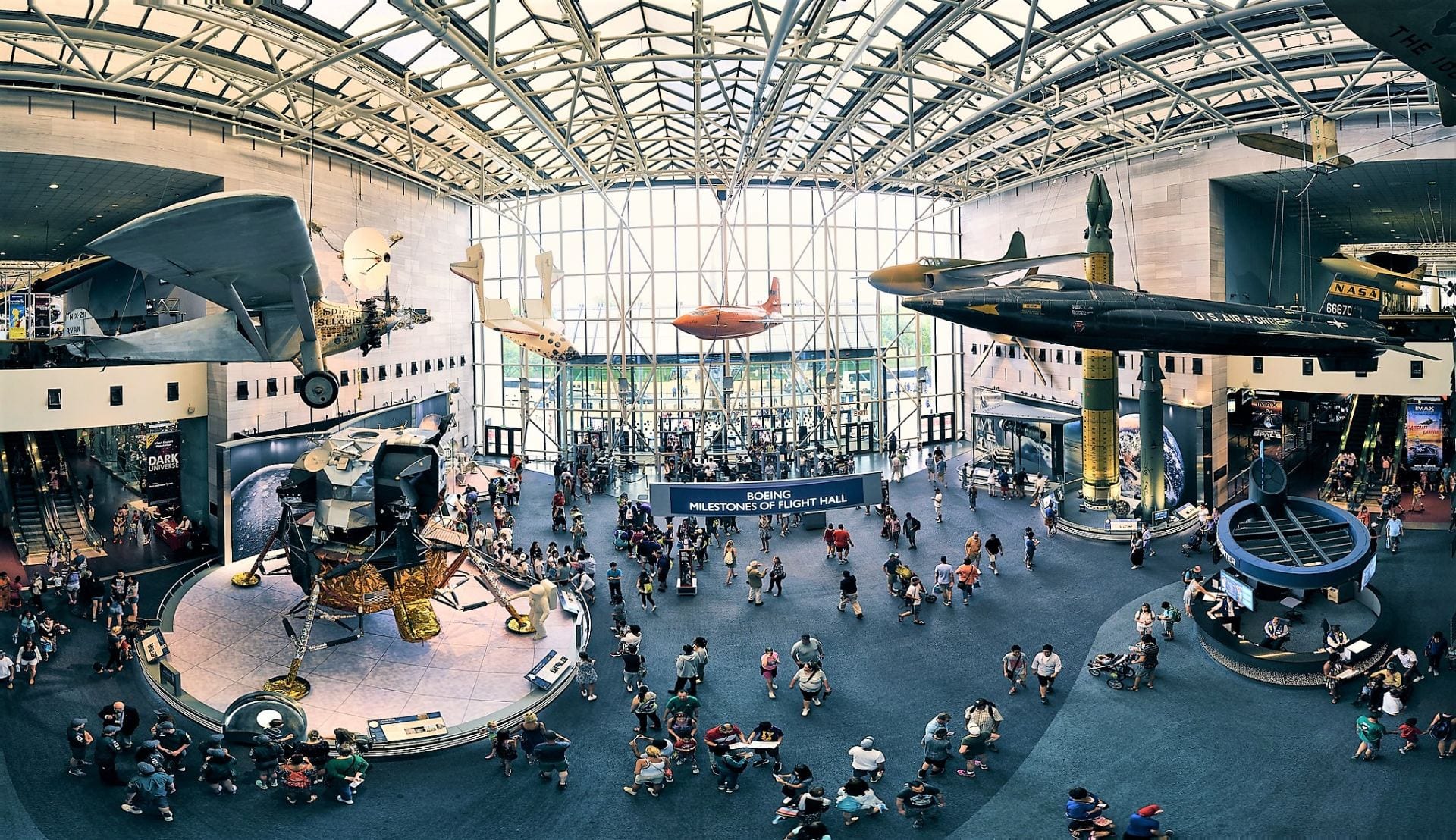Are you sure your childhood dream of becoming an astronaut will never come true? Don’t jump to conclusions. Everything is still ahead of you.
The museum is housed in two buildings, the National Mall in Washington, D.C., and a breathtaking structure near the airport.
The National Air and Space Museum was founded in 1976.
The museum has the world’s largest collection of historic aircraft and spacecraft. The museum is also a center for research in various fields of knowledge – history, astronomy, planetology, geology and geophysics.

History of the museum
The museum originally existed as the National Air Museum and was housed in the Smithsonian Institution building. The bill creating the museum was signed by U.S. President Harry Truman through an act of Congress on August 12, 1946.
The very first exhibit in the Smithsonian’s technology collection was a Stringfellow aircraft steam engine purchased by the institute in 1889, which is still in the museum today. Among the museum’s first exhibits were several kites obtained after the 1876 World’s Fair held in Philadelphia.
After World War I, the U.S. Army and Navy gave the museum some military equipment. Some of the exhibits were housed in the Arts and Industry Building and some in a hangar located south of the Smithsonian Institution Building. Missiles were displayed outside the building, and exhibits such as an American twin-engine seven-seat Martin medium bomber from World War II, a LePere fighter-bomber, a military aircraft designed primarily to destroy aerial targets, and an Aeromarine 39B float seaplane designed to take off and land on aircraft carriers were placed inside.
A large number of aircraft were received by the Smithsonian after World War II and the Korean War. This necessitated the creation of areas for storage and repair of flying equipment. In 1952, the Garber Facility was taken over by the museum, where museum exhibits are still stored and restored.
National Alley Museum Building
Since its opening in 1976, the National Air and Space Museum has been the most visited technology museum in the world.
The museum’s exhibits tell the story of flight from the early days of aeronautics – ballooning flights to the latest developments and space exploration in modern times. The exhibition features models, vividly highlighting the history of aviation. Along with flying machines, there are instruments that carry out satellite imagery and aerial photography, as well as various instruments for exploring the universe.

The museum displays such rarities as the glider of the Wright brothers, the single-engine airplane Spirit of St. Louis, which was designed in 1927 for the first nonstop solo flight from New York to Paris over 5,810 kilometers, and the command module of the Apollo 11 spacecraft, the Apollo 11 manned spacecraft.
The museum also features a movie theater, planetarium, and flight simulators.
There is a souvenir store and cafe on the museum grounds.
Stephen F. Udvar Hazy Center
The National Air and Space Museum building on National Alley houses only 10 percent of the Smithsonian Institution’s collection of aviation and space technology. Most of the exhibits, including the first U.S. reusable transport spacecraft, the Enterprise, the American B-29 Superfortress strategic bomber developed in the early 1940s, and the fastest Lockheed SR-71 Blackbird jet in aviation history, are on display at the Stephen F. Steven F. Udvar-Hazy Center, located near Dulles International Airport.
The Steven F. Udvar-Hazy Center has a large collection of aircraft and spacecraft on display. The larger aircraft are placed on the floor and the smaller ones on cables under the ceiling. Smaller exhibits are arranged on stands under glass.
The Stephen Hazy Center has a movie room, an observation tower overlooking Dulles Airport runways, and flight simulators. There is a gift store and cafe on site.